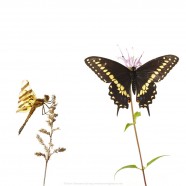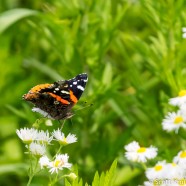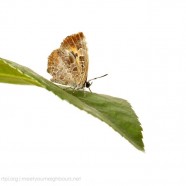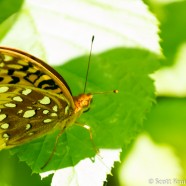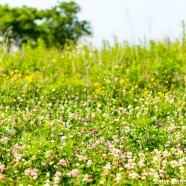Leps & Odes
This is a busy time of year for the dragonflies and butterflies of our lands! Here is a Halloween Pennant (Celithemis eponina) and Black Swallowtail (Papilio polyxenes), two gorgeous species you may be able to find in your own favorite patch right now. Go outside today and enjoy the summer activity! Photographed by RTPI Affiliate Sean Graesser for the Meet Your Neighbours global biodiversity project in Connecticut while on assignment for the Roger Tory Peterson Institute of Natural History.
Read MoreRed Admiral Feeding
The Red Admiral butterfly parade continues! Many have been pouring through the north, and are often noted as having been a primary Purple Martin food source this summer with bits of them left at gourd colonies. This individual paused for a moment and actually allowed me to snap off a shot as many typically have been flying by me without a second look. This sort of flight year really does help our aerial insectivores, a good example of the importance of our food web from bottom to top. Scott Kruitbosch Conservation & Outreach Coordinator
Read MoreHarvester (Feniseca tarquinius)
It might not look like an unusual butterfly, but the Harvester (Feniseca tarquinius) is North America’s only carnivorous butterfly. That’s right, flying around in our very own woodlands is a carnivorous butterfly! Its larval stage feeds on aphids usually found on Alder trees instead of a host plant. The adults will eat the honey dew excreted by aphids or tree-hoppers. These butterflies can be very difficult to find, usually only discovered while resting on the ends of leaves during territorial and mating disputes. Photographed by RTPI Affiliate Sean Graesser for the Meet Your...
Read MoreGreat Spangled Fritillary
This Great Spangled Fritillary (Speyeria cybele) was a tricky butterfly, staying hidden from my lens in some very harsh bright sunshine and dark shadows, making its individual features all the more bold. That glaring light did hide some of the bright orange shades, and maybe that is part of how it keeps itself safe. Scott Kruitbosch Conservation & Outreach Coordinator
Read MorePollinator Meadows
You think there are a few pollinator sources here? It may not be the most ideal mix of vegetation, and it may contain some non-native and even dominant or invasive species, but it is far better than a mowed lawn or some pavement, full of busy bees, beetles, butterflies and many other insects. Let it grow and keep it chemical free, folks! We can perfect it later.
Read More



